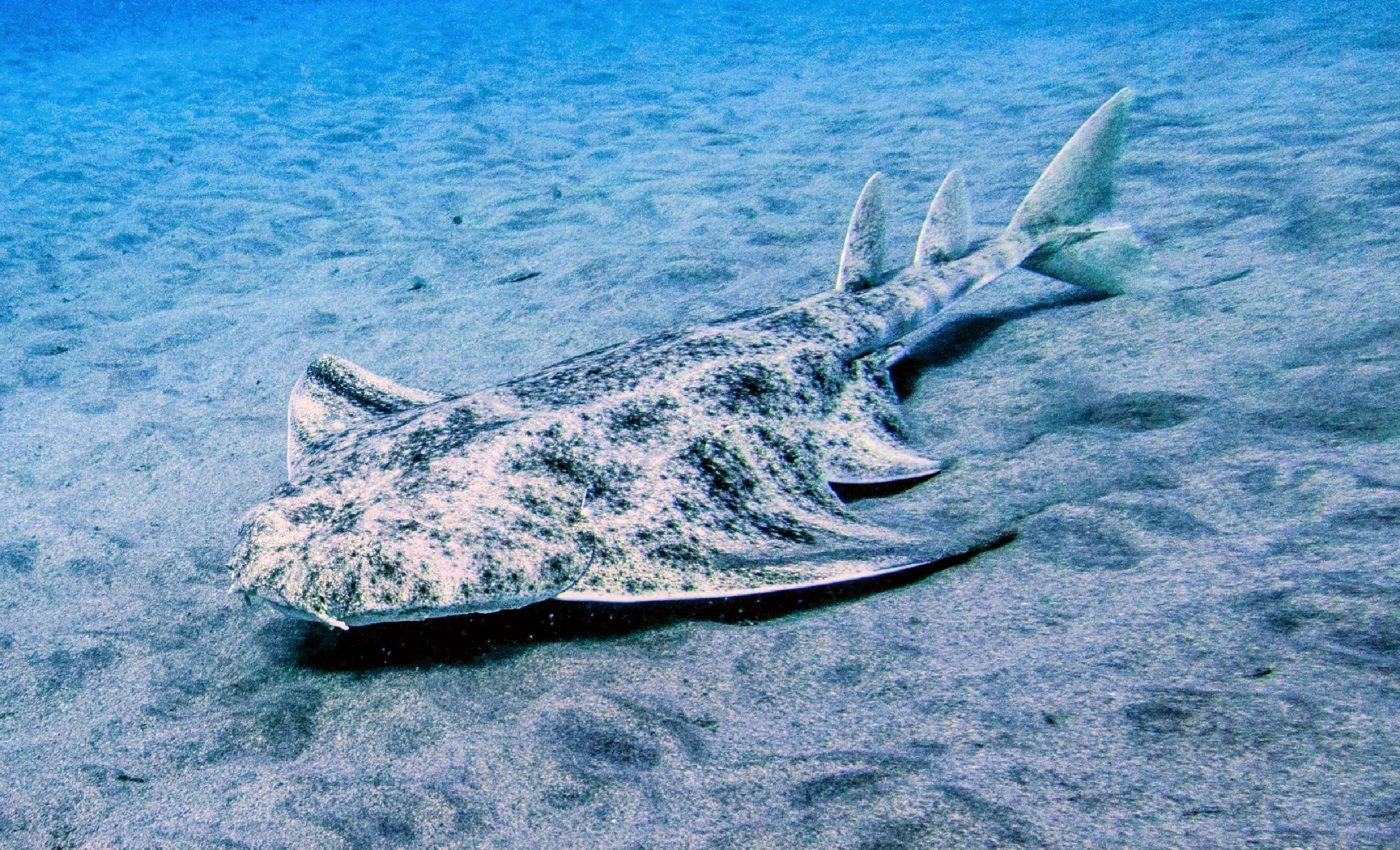
Angelsharks are skipping the mating season due to ocean warming
Ocean warming is altering the mating routines of angelsharks, according to a new study. Instead of showing up to breed, females are heading for cooler waters – leaving the males behind.
This mismatch in behavior, scientists say, could spell trouble for the future of the species.
A team of researchers from Lancaster University and the Angel Shark Project: Canary Islands uncovered this shift using acoustic trackers.
The study was focused on the Canary Islands, where sea temperatures have been rising steadily – particularly around La Graciosa Marine Reserve, off the coast of Lanzarote.
Angelsharks in a warming ocean
In 2022, the ocean around the reserve experienced extreme heat. Sea surface temperatures climbed above 23.8°C and stayed over 22.5°C for almost three times longer than in previous years. That temperature threshold, it turns out, is critical.
“The males were much more resilient to temperature rises and stuck to their regular patterns of arrival and departure, seemingly prioritizing mating despite these temperature extremes,” said Dr. David Jacoby, a zoologist at Lancaster University and lead investigator on the study.
But while the males arrived in November as usual, the females were largely absent. This disrupted their usual mating season, which typically begins in late autumn when the waters are cooler.
Unlike males, females have higher energy demands due to their reproductive biology. Staying cool is more than a preference – it’s a matter of survival.
“With angelsharks we observed important sex differences in behavior, with the females being disproportionately influenced by sea temperature rises,” noted Dr. Jacoby.
Heatwaves beneath the surface
Marine heatwaves may not be as visible as wildfires on land, but they can be just as disruptive.
“These more frequent and extreme heatwaves are potentially the wildfires of the ocean and are having untold effects on marine species,” Dr. Jacoby explained.
Between 2018 and 2023, the team tracked over 100 angelsharks. Until 2022, male and female sightings in the reserve peaked around the same time each year.
But then the pattern was broken. Female presence dropped off dramatically, and researchers believe 22.5°C is close to the upper temperature limit for their comfort.
A refuge for the angelshark
The Canary Islands are a major refuge for the angelshark, and one of the few places where both adults and juveniles are regularly seen.
The region supports a growing dive industry that relies on this rare predator as a flagship species. However, as ocean temperatures creep upward, the window for successful mating narrows.
“That fact that environmental extremes are driving differing male and female arrival times at coastal mating sites is of particular concern for this critically endangered species,” said Dr. Lucy Mead of ZSL’s Institute of Zoology and Lancaster University.
“Angelsharks – as with most other sharks – are ectothermic, which means their body temperature directly depends on surrounding water temperatures.’
“It seems that male angelsharks prioritize mating even when conditions are unfavorable, while females prioritize staying within their preferred temperature range.”
According to Dr. Mead, the Canary Islands are already at the warmer end of tolerable temperatures for angelsharks, and with significant warming projected here, our concern is that key areas may become inhospitable for females.
“These findings have important implications for how we conserve this highly threatened species in a warming world,” said Dr. Mead.
“Climate change impacts in the ocean tend to be ‘out of sight, out of mind’, but just as heatwaves and wildfires are becoming more frequent on land, so are extreme events in the oceans.”
Why long-term monitoring matters
The long-term tracking efforts behind this study show how vital it is to monitor temperature and shark movement together.
“These findings are a reminder of how climate extremes are already reshaping the behavior of threatened marine species,” said Eva Meyers, co-lead of the Angel Shark Project and researcher at the Leibniz Institute for the Analysis of Biodiversity Change.
“This study highlights exactly why long-term monitoring of critical habitats in the Canary Islands must be a key pillar of any effective marine biodiversity recovery plan. The Canary Islands are one of the main strongholds for this species – safeguarding these waters is more urgent than ever.”
The bigger picture for ocean life
Beyond angelsharks, the findings point to a broader concern – how warming oceans are unsettling the ecological balance of coastal ecosystems.
Dr. David Jiménez Alvarado is co-lead of the Angel Shark Project and postdoctoral researcher at the EcoAQUA Institute at the University of Las Palmas de Gran Canaria.
“It’s important to understand how changes in the ocean’s physicochemical conditions can affect the species that inhabit coastal ecosystems,” said Dr. Alvarado.
“These environmental shifts may alter the habitat use and behavior of key predatory species that play a crucial role in maintaining trophic balance.”
“Since many of these species are already globally threatened, studying how climate-related stressors impact their ecological function is essential for developing effective conservation and management strategies.”
The message from the angelsharks is simple: if the ocean keeps heating up, they may stop showing up. And if that happens, it’s not just bad news for the sharks – it’s a warning sign for all of us.
The full study was published in the journal Global Change Biology.
—–
Like what you read? Subscribe to our newsletter for engaging articles, exclusive content, and the latest updates.
Check us out on EarthSnap, a free app brought to you by Eric Ralls and Earth.com.
—–













